-
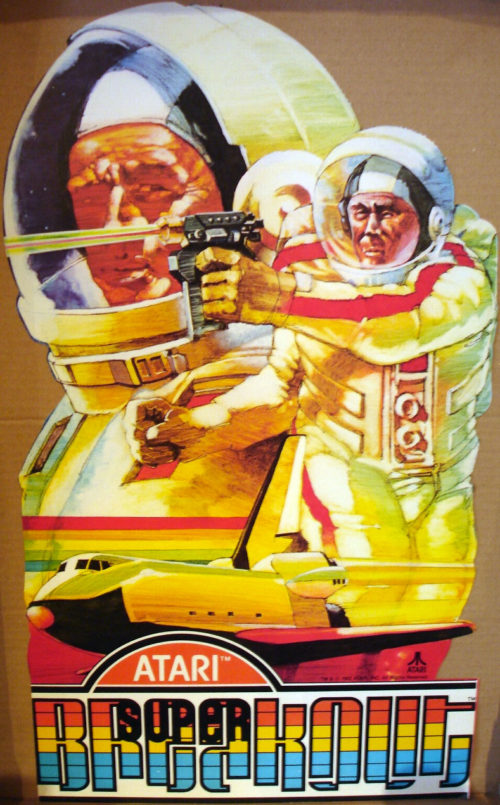 Move a paddle back and forth at the bottom of the screen to rebound a ball back into a brick wall, knocking bricks out one by one. There are three separate games: double — same as Breakout, knock down bricks and when they are all gone a new wall forms cavity — two other balls are inside the wall, when they have an escape route you can hit them as well progressive — as the wall is destroyed, new bricks are added and the entire wall shifts down toward your paddle. The sound effects are just simple beeps. This video game is a typical late ’70s machine which has been reproduced in many variations as well as downloaded apps on smartphones today. No complicated rules here, which is why it was so popular in its glory days. You control the horizontal paddle at the bottom of the playfield and, through the use of the spin controller, try to prevent losing the “ball” below the paddle. By aiming at the bricks, you try to hit all of them and then “break through” to the next layer of bricks. This accomplishment is rewarded with a period of high scoring and ricocheting video bounces of the “ball” until it escapes the brick layer and comes into your paddle again. These brick layers then start to drop toward your paddle. By the way, the TV is black and white!
Move a paddle back and forth at the bottom of the screen to rebound a ball back into a brick wall, knocking bricks out one by one. There are three separate games: double — same as Breakout, knock down bricks and when they are all gone a new wall forms cavity — two other balls are inside the wall, when they have an escape route you can hit them as well progressive — as the wall is destroyed, new bricks are added and the entire wall shifts down toward your paddle. The sound effects are just simple beeps. This video game is a typical late ’70s machine which has been reproduced in many variations as well as downloaded apps on smartphones today. No complicated rules here, which is why it was so popular in its glory days. You control the horizontal paddle at the bottom of the playfield and, through the use of the spin controller, try to prevent losing the “ball” below the paddle. By aiming at the bricks, you try to hit all of them and then “break through” to the next layer of bricks. This accomplishment is rewarded with a period of high scoring and ricocheting video bounces of the “ball” until it escapes the brick layer and comes into your paddle again. These brick layers then start to drop toward your paddle. By the way, the TV is black and white! -
 Gottlieb produced a few baseball-themed games, but Williams Manufacturing was the king of these types of games. This game, designed by Ed Krynski with art by Gordon Morison, had a run of 775 units. This is the add-a-ball version of this game, so it is rarer. The replay version is called Grand Slam. This game has eject holes which activate the roto-target, a Gottlieb exclusive device, which stops and a man is lit on a corresponding base to the eject hole on the baseball diamond. The rollover button lights when the bases are loaded. This scores 1,000 points whenever the bases are loaded. Runs and score are the ways to win free balls with this game.
Gottlieb produced a few baseball-themed games, but Williams Manufacturing was the king of these types of games. This game, designed by Ed Krynski with art by Gordon Morison, had a run of 775 units. This is the add-a-ball version of this game, so it is rarer. The replay version is called Grand Slam. This game has eject holes which activate the roto-target, a Gottlieb exclusive device, which stops and a man is lit on a corresponding base to the eject hole on the baseball diamond. The rollover button lights when the bases are loaded. This scores 1,000 points whenever the bases are loaded. Runs and score are the ways to win free balls with this game. -
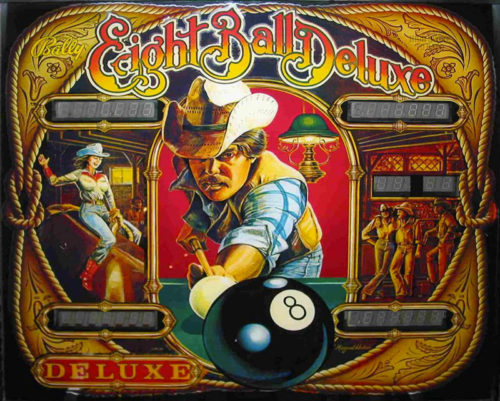 This game was very successful for the Bally company. It was initially released in 1981 as a full upright pinball with a production of 8,250 games. This version of the game in its third release had a run of 8,850 games. This cabinet was a unique design for Bally, as was used in a few other games like Pac-Man pinball. Designed by George Christian with art by Margaret Hudson, the pool-themed game is a classic. The basic object here is to hit all seven drop targets representing pool balls. The eight-ball drop target then pops up. Upon hitting it, “deluxe” lights up behind where the drop targets were. Making “deluxe” increases your bonus upon completion of the ball and advances the deluxe hold-over feature on the backglass. Hitting the in-line drop targets awards points and specials. The same is true if you shoot the left ramp to the top.
This game was very successful for the Bally company. It was initially released in 1981 as a full upright pinball with a production of 8,250 games. This version of the game in its third release had a run of 8,850 games. This cabinet was a unique design for Bally, as was used in a few other games like Pac-Man pinball. Designed by George Christian with art by Margaret Hudson, the pool-themed game is a classic. The basic object here is to hit all seven drop targets representing pool balls. The eight-ball drop target then pops up. Upon hitting it, “deluxe” lights up behind where the drop targets were. Making “deluxe” increases your bonus upon completion of the ball and advances the deluxe hold-over feature on the backglass. Hitting the in-line drop targets awards points and specials. The same is true if you shoot the left ramp to the top. -
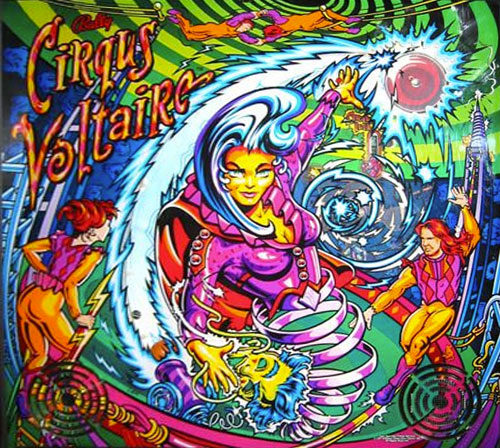 This game is one of the most colorful machines ever produced and it has a lot of toys to boot. 2704 of them were made and when they came out, demand was low so many sat around for years in their shipping boxes. Today it’s a top 10 collectible machine. John papadiuk designed the game with linda deal penning the artwork. Neon, disappearing pop bumper, managerie ball, magnetized ringmaster, cannon ball backglass animation and a dot matrix display embedded above the playfield are a few of its unique features. The object of the game is to complete all the playfield insert parts by defeating them. This spells out the word circus.. The ringmaster must also be completed. If you’re skillful enough to do this, you become part of the circus which brings you into 6 levels of multiball competition to complete the game. Good luck!!!
This game is one of the most colorful machines ever produced and it has a lot of toys to boot. 2704 of them were made and when they came out, demand was low so many sat around for years in their shipping boxes. Today it’s a top 10 collectible machine. John papadiuk designed the game with linda deal penning the artwork. Neon, disappearing pop bumper, managerie ball, magnetized ringmaster, cannon ball backglass animation and a dot matrix display embedded above the playfield are a few of its unique features. The object of the game is to complete all the playfield insert parts by defeating them. This spells out the word circus.. The ringmaster must also be completed. If you’re skillful enough to do this, you become part of the circus which brings you into 6 levels of multiball competition to complete the game. Good luck!!! -
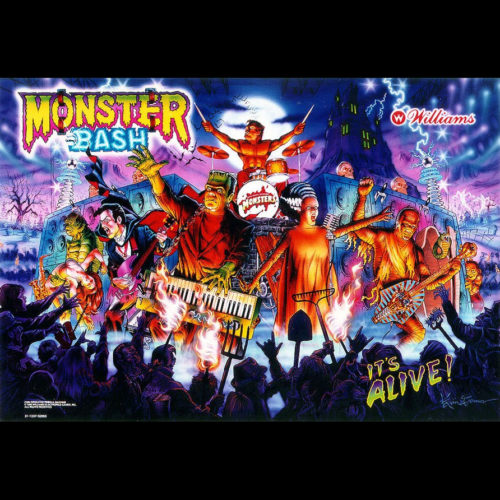
-
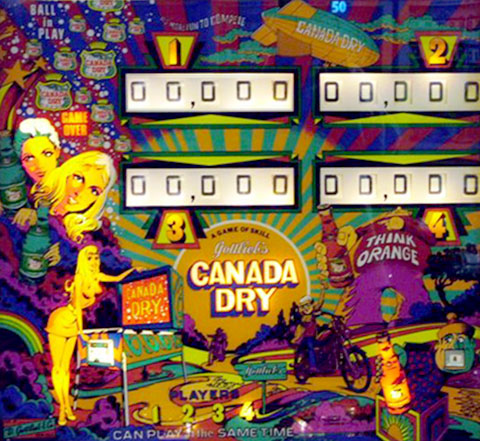 Another rare machine stands before you. Although 2,885 units were produced, they were all sent to France as a promotion in a contest to market Canada Dry soda. Designed by Ed Krynski and art by Gordon Morrison, this game was released in the US as a one player, two player and four player version. If you like drop targets this is your game. Fifteen drop targets live in this playfield design! If you’re skillful enough to hit all the upper drop targets, the side extra ball rollovers activate. The same is true if you hit the bottom five drop targets. If, however, you’re skillful enough to complete all fifteen targets, the specials are activated. Score is another way to win. The machines put on location in France provided high-scoring winners with monetary prizes from Canada Dry. I wish they would do this in the united States, especially in Atlantic City.
Another rare machine stands before you. Although 2,885 units were produced, they were all sent to France as a promotion in a contest to market Canada Dry soda. Designed by Ed Krynski and art by Gordon Morrison, this game was released in the US as a one player, two player and four player version. If you like drop targets this is your game. Fifteen drop targets live in this playfield design! If you’re skillful enough to hit all the upper drop targets, the side extra ball rollovers activate. The same is true if you hit the bottom five drop targets. If, however, you’re skillful enough to complete all fifteen targets, the specials are activated. Score is another way to win. The machines put on location in France provided high-scoring winners with monetary prizes from Canada Dry. I wish they would do this in the united States, especially in Atlantic City. -
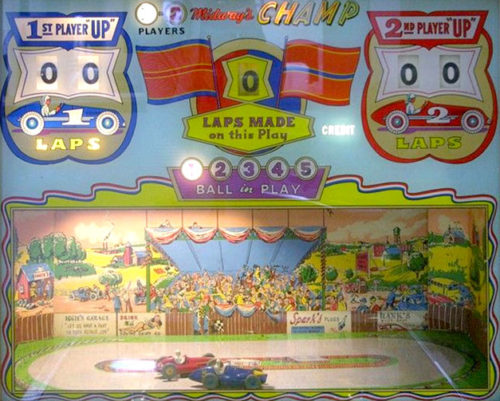
-
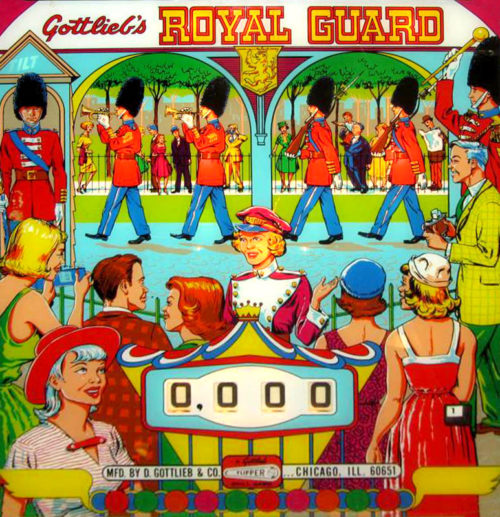
-
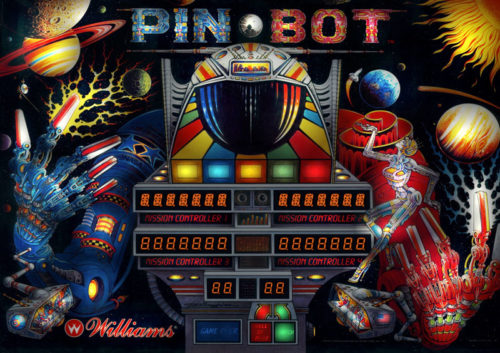 This machine was a big hit for Williams with 12,000 machines created. A skill shot starts your adventure with different point values. A three-bank drop target or single right target advances the planets lit in the playfield. If you advance to the lit planet, a free game is your reward. The light grid, if hit when a solo target is lit, opens the visor. Otherwise, hitting all the lights opens the visor. Locking two balls in the “eyes” of the robot starts two-ball multiball. Lock one ball in one eye and shoot for the left solar ramp. Advance the bonus value by making the left ramp loop when the visor is down. This game is fun, challenging and the vocals egg you on throughout your adventure.
This machine was a big hit for Williams with 12,000 machines created. A skill shot starts your adventure with different point values. A three-bank drop target or single right target advances the planets lit in the playfield. If you advance to the lit planet, a free game is your reward. The light grid, if hit when a solo target is lit, opens the visor. Otherwise, hitting all the lights opens the visor. Locking two balls in the “eyes” of the robot starts two-ball multiball. Lock one ball in one eye and shoot for the left solar ramp. Advance the bonus value by making the left ramp loop when the visor is down. This game is fun, challenging and the vocals egg you on throughout your adventure. -
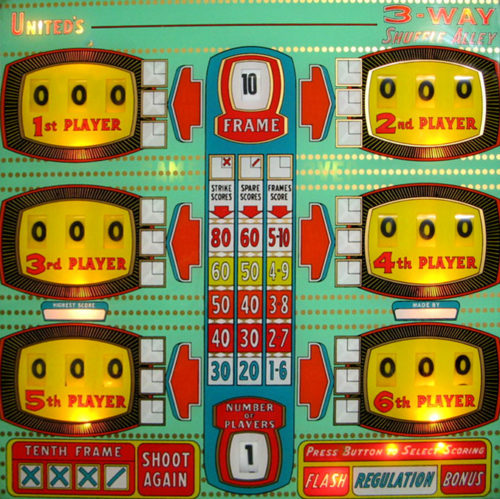
-

-
 Defender is an arcade video game developed and released by Williams Electronics in 1980. A shooting game featuring two-dimensional (2D) graphics, the game is set on a fictional planet where the player must defeat waves of invading aliens while protecting astronauts. Development was led by Eugene Jarvis, a pinball programmer at Williams; Defender was Jarvis’ first video game project, and drew inspiration from Space Invaders and Asteroids. Defender is a two-dimensional side-scrolling shooting game set on the surface of an unnamed planet. The player controls a space ship as it navigates the terrain, flying either to the left or right. A joystick controls the ship’s elevation, and five buttons control its horizontal direction and weapons. The object is to destroy alien invaders, while protecting astronauts on the landscape from abduction. Humans that are successfully abducted return as mutants that attack the ship. Defeating the aliens allows the player to progress to the next level. Failing to protect the astronauts, however, causes the planet to explode and the level to become populated with mutants. Surviving the waves of mutants results in the restoration of the planet. Players are allotted three chances (lives) to progress through the game and are able to earn more by reaching certain scoring benchmarks. A life is lost if the ship comes into contact with an enemy or its projectiles. After exhausting all lives, the game ends. Defender is an arcade video game developed and released by Williams Electronics in 1980. A shooting game featuring two-dimensional (2D) graphics, the game is set on a fictional planet where the player must defeat waves of invading aliens while protecting astronauts. Development was led by Eugene Jarvis, a pinball programmer at Williams; Defender was Jarvis’ first video game project and drew inspiration from Space Invaders and Asteroids. Defender was one of the most important titles of the Golden Age of Arcade Games, selling over 55,000 units to become the company’s best selling game and one of the highest-grossing arcade games ever. Praise among critics focused on the game’s audio-visuals and gameplay. It is frequently listed as one of Jarvis’ best contributions to the video game industry as well as one of the most difficult video games. Defender was ported to numerous platforms, inspired the development of other games, and was followed by sequels and many imitations. Defender is a two-dimensional side-scrolling shooting game set on the surface of an unnamed planet. The player controls a space ship as it navigates the terrain, flying either to the left or right. A joystick controls the ship’s elevation, and five buttons control its horizontal direction and weapons. The object is to destroy alien invaders while protecting astronauts on the landscape from abduction. Humans who are successfully abducted return as mutants that attack the ship. Defeating the aliens allows the player to progress to the next level. Failing to protect the astronauts, however, causes the planet to explode and the level to become populated with mutants. Surviving the waves of mutants results in the restoration of the planet. Players are allotted three chances (lives) to progress through the game and are able to earn more by reaching certain scoring benchmarks. A life is lost if the ship comes into contact with an enemy or its projectiles. After exhausting all lives, the game end.
Defender is an arcade video game developed and released by Williams Electronics in 1980. A shooting game featuring two-dimensional (2D) graphics, the game is set on a fictional planet where the player must defeat waves of invading aliens while protecting astronauts. Development was led by Eugene Jarvis, a pinball programmer at Williams; Defender was Jarvis’ first video game project, and drew inspiration from Space Invaders and Asteroids. Defender is a two-dimensional side-scrolling shooting game set on the surface of an unnamed planet. The player controls a space ship as it navigates the terrain, flying either to the left or right. A joystick controls the ship’s elevation, and five buttons control its horizontal direction and weapons. The object is to destroy alien invaders, while protecting astronauts on the landscape from abduction. Humans that are successfully abducted return as mutants that attack the ship. Defeating the aliens allows the player to progress to the next level. Failing to protect the astronauts, however, causes the planet to explode and the level to become populated with mutants. Surviving the waves of mutants results in the restoration of the planet. Players are allotted three chances (lives) to progress through the game and are able to earn more by reaching certain scoring benchmarks. A life is lost if the ship comes into contact with an enemy or its projectiles. After exhausting all lives, the game ends. Defender is an arcade video game developed and released by Williams Electronics in 1980. A shooting game featuring two-dimensional (2D) graphics, the game is set on a fictional planet where the player must defeat waves of invading aliens while protecting astronauts. Development was led by Eugene Jarvis, a pinball programmer at Williams; Defender was Jarvis’ first video game project and drew inspiration from Space Invaders and Asteroids. Defender was one of the most important titles of the Golden Age of Arcade Games, selling over 55,000 units to become the company’s best selling game and one of the highest-grossing arcade games ever. Praise among critics focused on the game’s audio-visuals and gameplay. It is frequently listed as one of Jarvis’ best contributions to the video game industry as well as one of the most difficult video games. Defender was ported to numerous platforms, inspired the development of other games, and was followed by sequels and many imitations. Defender is a two-dimensional side-scrolling shooting game set on the surface of an unnamed planet. The player controls a space ship as it navigates the terrain, flying either to the left or right. A joystick controls the ship’s elevation, and five buttons control its horizontal direction and weapons. The object is to destroy alien invaders while protecting astronauts on the landscape from abduction. Humans who are successfully abducted return as mutants that attack the ship. Defeating the aliens allows the player to progress to the next level. Failing to protect the astronauts, however, causes the planet to explode and the level to become populated with mutants. Surviving the waves of mutants results in the restoration of the planet. Players are allotted three chances (lives) to progress through the game and are able to earn more by reaching certain scoring benchmarks. A life is lost if the ship comes into contact with an enemy or its projectiles. After exhausting all lives, the game end.